The Science and Art of Creating Snow for Young Minds


Intro
Snow has a special place in the hearts of many. It creates beautiful landscapes and provides endless fun. But, have you ever thought about how we can create snow without waiting for winter? This article takes you into the fascinating world of making snow indoors. By understanding the science behind creating snow, young science buddies can explore temperature, weather, and water chemistry.
Science Fun Facts
Learning about snow can be fun and surprising. Here are some fun facts to kick things off:
- Snow doesn’t just have to fall from the sky. It can be produced artificially too.
- Did you know that no two snowflakes are exactly alike? This uniqueness is because of variations in temperature and humidity.
- One cubic foot of snow can weigh anywhere from 5 to 30 pounds depending on its density.
- Snow acts as a natural insulator, protecting plants and animals from cold temperatures.
Snowflakes typically form in older clouds at higher altitudes, where water vapor freezes and crystallizes.
Discover the Wonders of Science
Understanding snow can inspire curiosity about bigger scientific concepts. Here are a few areas to explore:
- Weather Patterns: How do conditions lead to snowfall?
- Temperature Effects: How does changing temperature impact the formation of ice and snow?
- States of Water: Snow begins as vapor, transforms to liquid, and can freeze into ice. Can you visualize this cycle?
Educational Videos and Animations
Visuals play an essential role in learning. Videos on sites like Britannica show how snow forms in nature and guides about creating man-made snow.
Interactive Learning Tools
Using apps or websites can make this topic come alive. Many resources simulate weather changes and snow formation, making it easier for kids to understand and visualize.
Real-Life Applications of Science
Knowing about snow is not only fun, it’s useful too. Artificial snow is employed in areas like skiing, snowboarding, and even special effects in movies. Understanding how snow is formed can also widen knowledge in weather safety and climate.
Science Quiz Time
Assessing knowledge through quizzes can be very engaging!
Interactive Quizzes
Kids can enjoy learning with multiple-choice questions on snow, weather, and water states.
Example Question:
- What state of water is snow?
- A. Solid
- B. Liquid
- C. Vapor
Correct answer: A. Solid
Brain Teasers and Puzzles
Integrating puzzles related to snow can make learning fun. For example, choosing which conditions lead to a snowy day can enhance understanding.
Science Experiment Showcase
Engagement can happen with practical snow-making experiments at home.
Fun and Engaging Experiments
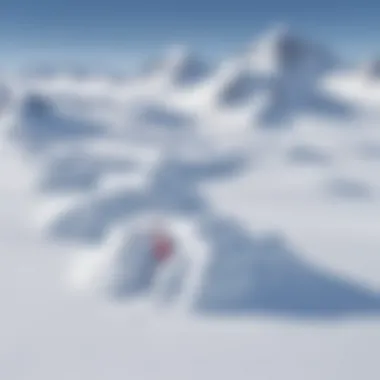
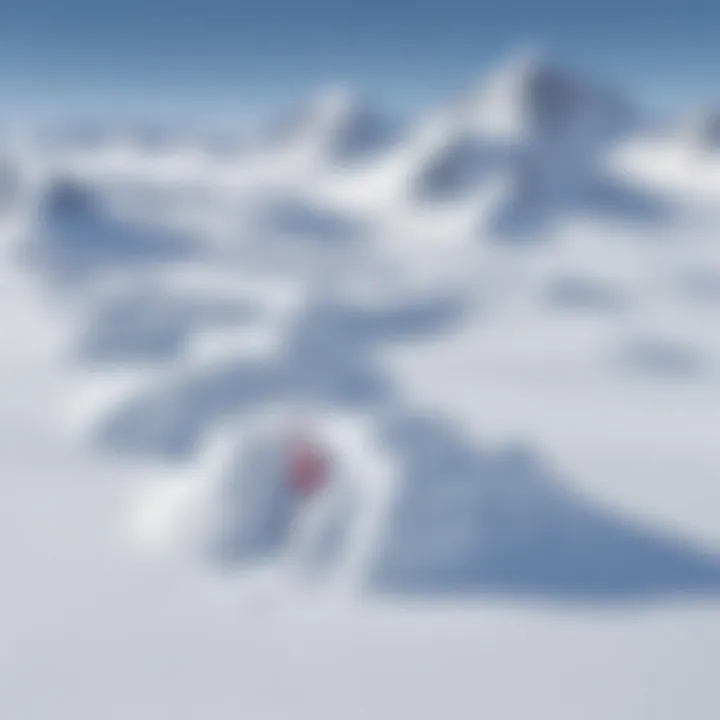
Try making artificial snow using common kitchen ingredients. This simple process turns hydrated polymer beads into fake snow!
Step-by-Step Instructions
- Gather materials including polymer beads and water.
- Mix the beads with water.
- Observe as they expand and resemble real snow.
Materials List
- Polymer beads
- Bowl
- Water
Safety Tips and Precautions
While this experiment is quite safe, always supervise young children to ensure they handle materials correctly.
Through this exploration, young science enthusiasts will not only learn about snow but also engage their curiosity and critical thinking skills. Next, we will delve deeper into the chemistry of snow and its creation!
Understanding Snow
Understanding snow is foundational to this exploration of artificial snow-making. It is crucial for young learners to grasp what snow is and its natural characteristics. Knowing its composition and structure fosters curiosity about weather phenomena and environmental science. An educational perspective on snow allows for engaging discussions about nature's processes, making it a fascinating subject.
What is Snow?
Snow is a form of precipitation, consisting of white, frozen ice crystals. These soft flakes fall from clouds when temperatures plunge below freezing. Although many see snow as a winter delight, it plays a significant role in the climate.
Snowflakes form when water vapor condenses into ice and crystals. The conditions during formation impact each flake’s shape and size. Interestingly, no two snowflakes are alike. Their differences come from variations in temperature, humidity, and atmospheric conditions.
The Science of Snowflakes
Formation Process
The formation process of snowflakes is an incredible journey that begins with water vapor. When the air gets chilly enough, the vapor freezes and transforms into tiny ice crystals. As these crystals collide and stick together, they grow bigger, creating unique shapes. The atmosphere's temperature and humidity level decide how these ice crystals develop.
This cultural knowledge is enriching for this article since it helps kids appreciate snow's scientific beauty. By examining these processes, readers learn fundamental concepts of condensation and crystallization.
Some advantages of understanding this process include cultivating an interest in science and observing the weather changes. However, the complexity can be daunting for some young learners, necessitating clear explanations.
Unique Structures
Unique structures of snowflakes arise from their environmental conditions. The difference in temperature leads to distinct forms. Some are simple hexagons, while others develop complex intricate designs. The uniqueness is an essential aspect, showing how natural factors create diversity.
Learning about these structures provides valuable insight into mathematics and biology alongside science. It encourages young science enthusiasts to notice patterns in nature. One drawback is that many can find the lack of parallels to everyday experiences less relatable.
It's important to recognize that snow forming is not just a simple act of cold weather but an extraordinary intersection of elements working together.
Discovering what snow is and how snowflakes are created stimulates a young audience's imagination and nurtures their enthusiasm for scientific inquiry.
The Science Behind Making Artificial Snow
Artificial snow is an intriguing product of science, a technological achievement that enables a snowy environment even in the absence of cold weather. Understanding this topic enhances knowledge about meteorological processes and the science of water. It encapsulates vital engineering techniques and serves numerous industries, principally the ski and entertainment sectors.
Benefits of Understanding Artificial Snowmaking
Being aware of these processes can inform environmental practices and promote advancements in sustainability. Recognizing how we create snow brings forth kinship between technology and natural systems that include water conservation measures. This science invites curiosity as much as it supports practical applications.
How is Artificial Snow Made?
The process of creating artificial snow involves several steps and components. Primarily, it takes a combination of cold temperatures, water, and technology to churn out the snow-like product we often see at ski slopes and other venues. Snow machines, or snow guns, mix air and water, employing both pressure and cooling to create tiny ice particles. When aimed at negative or just below-zero temperatures, these particles can fall to the ground, becoming artificial snow.
Temperature and Humidity Factors
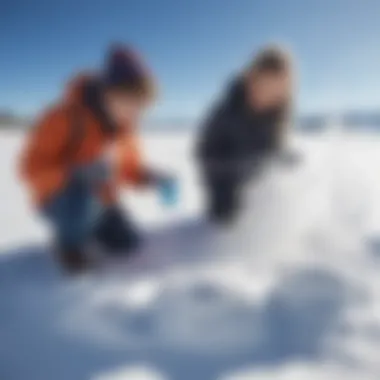
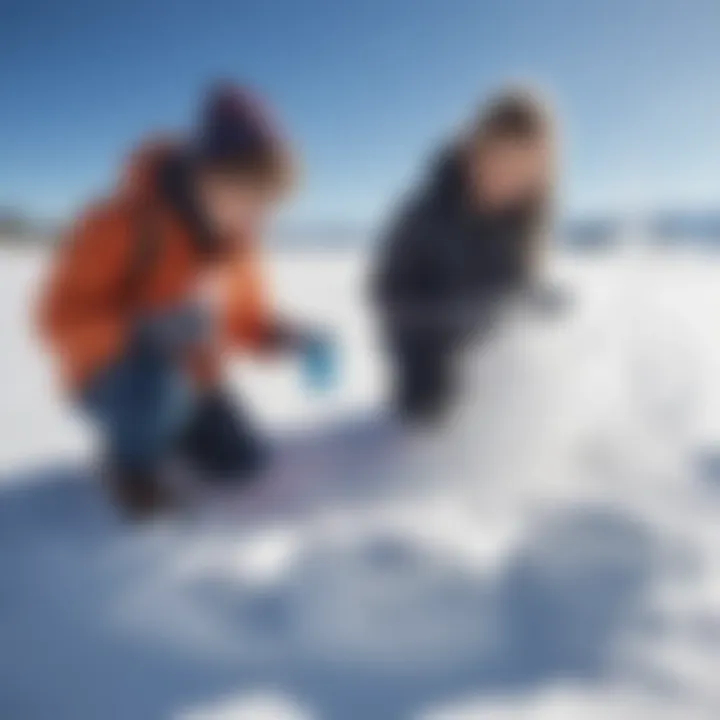
The environmental conditions play a crucial role in snow production. When temperatures drop well below zero Celsius (around 32°F), the likelihood increases for water to freeze into small snowflakes almost immediately. Humidity, or the amount of water vapor in the air, affects the quality and consistency of the snow produced. In general, higher humidity means better snow conditions since moist air allows better formation of snow particles.
The Role of Water in Snow Making
Water is essential for snow-making; its availability directly affects how much artificial snow can be produced.
Water Quality
High-quality water is crucial for producing artificial snow. It should be as pure as possible, with minimal contaminants. The presence of minerals or impurities can greatly alter how snow behaves. The ideal choice for this article is distilled water that ensures that no unwanted particles interfere in snow formation. One advantage of good water quality is that it leads to more uniform and fluffy snow, which is desirable for winter sports and aesthetics.
Particle Size
Particle size is another key element in artificial snow production. Smaller particles can freeze more readily and drift easily, creating a perfect snow blanket. However, larger particles may melt quickly or turn slushy following environmental changes. The notion that smaller particles yield superior snow is common in the industry; it results in lighter and softer outcomes. However, larger ice flakes can provide maximum coverage despite some limitations.
Proper knowledge about water quality and particle sizes allows enthusiasts and professionals to better control artificial snow production under varying climates.
Snow Making Techniques
Snow making techniques are essential in creating artificial snow for various applications, particularly in the ski industry. Understanding these methods offers insights into how humans can mimic nature's processes to provide recreational activities as well as environmental management.
Snow Machines and Their Mechanisms
Snow machines are machines designed to produce artificial snow using specific techniques. They rely on the principles of moisture and temperature to create snow crystals, much like those falling from the sky. These devices often feature two primary components: air compressors and water nozzles. The air compressors expel air at high pressure, while water is expelled at a different pressure to form tiny droplets. When these two elements come together, they create a fine mist that can freeze into snowflakes.
The performance of snow machines depends on various factors including moisture levels, temperature, and the surrounding environment. A machine that creates effective snow must balance all of these elements. This balance is crucial to producing snow that bonds well and retains its structure, giving a quality experience for users.
In addition, advances in technology lead to more efficient and environmentally friendly machines. Some snow machines reduce water usage, minimizing impact on local water supplies as they produce artificial snow.
Types of Snow Production
Several techniques exist for snow production, each employing distinct technologies more effective under certain conditions. With a clear overview, we can observe larger trends as well as compelling features of individual types.
Fan Gun Technology
Fan gun technology includes machines that combine air and water in a mechanical device to create snow. A core characteristic of these machines lies in their ability to produce snow on warmer days by fine-tuning the ratios of air to water. Their design allows for an effective mix that yields snow with minimal energy use.
One key advantage of fan guns is the increased range; they can project snow far into ski areas, which helps optimize overall coverage. This feature allows terrain to be awakened earlier in winter months. However, this technology does come with some drawbacks, particularly in terms of setup and cost. Fan guns can be more expensive and require careful planning to utilize effectively.
Air and Water Mix
Air and water mix is another method for creating artificial snow. This method highlights the synergy between air compression and water atomization. It focuses on creating tiny vortexes of air, which help form icy particles within seconds when come in contact with water.
The aptitude for this method is its impressive versatility. This allows producers to generate snow in diverse weather conditions while keeping operating costs lower. A unique feature of the air-water mix technology involves its ability to operate efficiently with low humidity.
Despite these advantages, one area of concern is the actual water quality. Different sources of water can impact the snow quality, as filtered, clean water tends to create the best snow crystals. It is always important to monitor samples to maintain the desire snow quality.
These various technologies reflect the rapid advancement in the field of artificial snow making and adapt to environmental parameters while striving toward enhancements homes for recreation and science.
Snow making techniques not only change our enjoyment in snowy activities but also provide essential tools for supporting ecosystems and scientific research.
Applications of Artificial Snow
Artificial snow plays a crucial role in several aspects of modern life. Its significance goes beyond creating winter fun; it is deeply embedded in recreational activities, arts and entertainment, and even scientific inquiry. Understanding its applications helps young readers appreciate how human ingenuity interacts with natural processes.
Ski Resorts and Recreation
In areas where natural snowfall is scarce, ski resorts rely heavily on artificial snow to ensure a viable winter sports season. Snow machines deposit tiny bits of water into the cold air. The water turns into snow flakes that accumulate on ski runs. This process prevents resort closures at times when weather conditions do not allow for sufficient natural snow accumulation. Not only does it enhance the skiing experience for visitors, but it also has significant economic benefits. These resorts provide jobs for people and contribute to local communities’ economies.
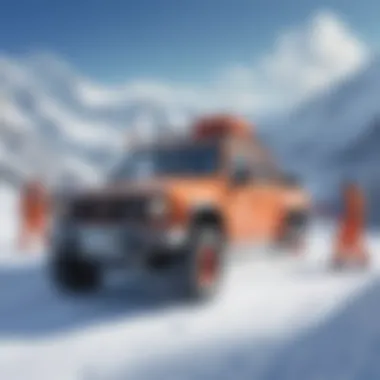

The artificial snow is engineered to be compatible with skiing and snowboarding. It has a fluffier texture which allows for better glide and a softer landing. This formulated snow may even be groomed effectively, maintaining the quality of runs and paths, ensuring enjoyment is consistently high.
Film and Entertainment Industry
The film industry often requires snow to create a winter ambiance that might not be available naturally. In movies and television shows, artificial snow is widely used for scenes set in wintery settings. Through the expertise of special effects teams, realistic-looking snow is tailored to the director's needs. Brands like Snow Business provide versatile options to meet these demands. Their artificial products are safe and easy to use, making them a great solution for filmmakers.
Examples include immersive Christmas movies that depend solely on beautifully crafted scenes filled with artificially made snow. Viewers might never realize that the winter wonderland before them is the result of human innovation. One of the advantages of using artificial snow in shoots include the control over lighting and ambiance, resulting in stunning cinematography.
Scientific Research
Researchers use artificial snow in various ways to simulate winter environments for their experiments. Scientists study needs based on precise conditions that may inlfuence ecosystems or climate patterns.
The use of artificial snow enables experimental consistency, meaning scientists can test their hypotheses under controlled conditions. Some current research explores the interactions between different species and snow-covered ecosystems. Furthermore, studies about climate change often employ synthetic snow in their modeling experiments.
This application part of artificial snow goes underappreciated, yet it is fundamental to enhancing scientific findings in cold-weather biology and ecology. In summary, artificial snow is at the forefront in several sectors.
Practical Experiments to Explore
The section of practical experiments is vital in this article as it offers children the chance to crystallize their understanding of snow creation through hands-on activities. Engaging in simple experiments allows for a deeper comprehension of the science of snow. Young learners get to explore principles such as temperature variations and the properties of water, bringing theoretical knowledge to life in an interactive way. This practical component complements the theoretical information in the previous sections, effectively encouraging curious minds to experiment, observe, and discuss findings with peers or family. This explorative approach enhances the learning experience, encouraging critical thinking and fostering a love for science.
Simple Snow-Making Experiment at Home
Creating your own
Environmental Considerations
It is vital to understand environmental considerations when discussing artificial snow. This section helps us evaluate how creating snow can influence the surrounding natural world. As technology advances and we make more snow, it's important to recognize both the benefits and the potential downsides. By exploring this topic, we can learn to create snow more responsibly.
The Impact of Artificial Snow on Ecosystems
Artificial snowmaking can have various effects on local ecosystems. It is often used in ski resorts, which can alter the natural habitat of many plants and animals. Introducing artificial snow changes not just the landscape but also affects the soil and existing flora. For instance, some plants that thrive in natural snowy conditions might not survive under synthetic snow cover.
- Habitat Displacement: Animals typically avoid areas with too much human activity. When artificial snowmaking is implemented, wildlife might have to relocate their homes, which does endanger their continued survival in those areas.
- Chemical Impacts: The snowmaking process requires water, often collected from groundwater or rivers, and this can rapidly impact local water levels. In extreme cases, certain chemicals used in the snowmaking process could seep into the environment, leading to alterations in water quality.
- Climate Interaction: An artificial snow layer reflects sunlight, similar to natural snow. However, because it's usually created with different processes, its thermal properties might not behave as naturally occurring snow does. This can influence local climatic conditions subtly.
“Understanding the impact of artificial snow on ecosystems is not just by factors related to snow, but also includes a vast array of environmental interactions.”
Conservation of Water Resources
Creating snow artificially is a water-intensive process, and it raises questions about conservation of water resources. Every fluffy snowfall might just be thousands of liters of water sourced artificially or from natural waters. Managing water usage effectively in this context is essential for ecological balance.
- Resource Allocation: Ski resorts or snow parks rely heavily on water. It’s well to ask whether this water might be vital for other local uses such as farming, drinking, or maintaining clean water supplies for wildlife.
- Water Cycle Awareness: It is important to appreciate how withdrawing substantial quantities of water influences the local water cycle. When we engage extensively in artificial snowmaking, we could change evaporation rates, groundwater recharge, and ultimately the entire ecosystem’s water budget.
The Future of Snow Making Technology
The progression of snow making technology carries much importance in today's world. As the climate changes, the demand for reliable snow for recreation remains. Snow making systems must evolve to meet these challenges, ensuring ski resorts can still offer ideal conditions even with less cliemate variability. This section explains the critical elements that lie ahead in snow making advancements, emphasizing the benefits and considerations.
Innovations in Snow Production
Current innovations in snow production play a significant role in shaping the future of this field. Enterprises like TechnoAlpin and Artic Snow look toward creating smarter systems.
- Advanced Snow Gun Technologies: New models utilize more efficient fan designs that produce snow using less energy. This combination not only lowers operation costs but also increases the volume of snow.
- Microprocessor-Controlled Units: These may allow for enhanced monitoring of environmental conditions. Owning direct homes connected snow productivity levels with temperature and humidity can support much effective snow generation.
- Hybrid Technologies: Combining traditional snow making with modern methods can result into systems that adapt better based on season changes. The aim remains to strike a balance between natural snowfall and artificial means.
The integration of these innovations can lead to more dynamic production processes. Adapting mechanisms in response to climate fluctuations may prove vital.
Sustainability Measures
Environmental sustainability is among the essential measures for future snow making. As artificial snow becomes more common, the requirement to be mindful of the resources used is growing. Different strategies can be acknowledged to enhance sustainability.:
- Water-Management Practices: Implementing systems designed to monitor water quality and reduce wastage proves crucial. Captured rainwater or recycled waste water can drastically reduce the impact on nearby freshwater sources.
- Energy Efficiency: The transition to low-energy motors and systems provide significant energy savings. This addresses operational costs while safeguarding the environment.
- Recycling Used Snow: Currently, some resorts are hypothesizing the practice of saving excess snow from earlier seasons. Monitoring how these innovations align with other industry practices is essential.
Investing in a sustainable future not only caters for present needs but also secures valuable resources for upcoming generations.
The commitment to sustainability combines technologies with methods that are kind to the earth. Exploring these areas further brings us towards a universal approach that allows for the enjoyment of artificial snow without jeopardizing natural resources. Ultimately, a thoughtful approach to the future of snow making technology can foster resilience in diverse recreational sports and genuine respect of nature across the globe.







